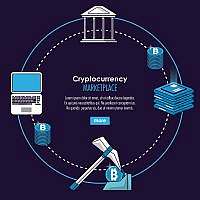Cryptocurrencies have brought about a new era of financial freedom, enabling people to control their money without relying on traditional financial institutions. With this new technology comes new risks, such as the possibility of fraud or theft by exchanges that hold users’ funds.
To mitigate these risks, a concept known as Proof of Reserve has emerged, which aims to provide transparency and assurance to users that exchanges hold sufficient reserves to cover all user balances.
What are proof of reserve?
Proof of Reserve is a method used by cryptocurrency exchanges to prove that they hold enough cryptocurrency to cover all customer deposits. It involves publishing a cryptographic proof of the exchange’s reserves, which can be independently verified by anyone.
This proof can take different forms, but it usually involves publishing a signed message from a cold wallet address that contains the exchange’s reserve balance. The signed message can then be verified by anyone with access to the blockchain, ensuring that the exchange is holding the amount of cryptocurrency it claims to be holding.
Can proof of reserve help crypto’s image
The idea of Proof of Reserve is not new and has been used in traditional finance for years. Banks, for example, are required to maintain certain reserve ratios to ensure that they have enough cash on hand to cover customer deposits.
In the cryptocurrency world, exchanges have no such regulatory requirements, and the industry is largely unregulated. Therefore, Proof of Reserve serves as a voluntary measure to increase trust and confidence in exchanges, especially those that are not subject to regulatory oversight.
By implementing Proof of Reserve, cryptocurrency exchanges can offer their customers the assurance that their funds are secure and that the exchange is operating in a transparent and honest manner.
This can help to attract more users and improve the reputation of the exchange. Furthermore, the use of Proof of Reserve can also serve as a competitive advantage, as users are more likely to choose an exchange that offers this level of transparency and security.
Have exchanges implemented proof of reserve?
Some exchanges have already implemented Proof of Reserve, while others are in the process of doing so. For example, Coinbase, one of the largest cryptocurrency exchanges in the world, published a blog post in 2020 outlining its plan to implement Proof of Reserve.
The exchange stated that it would publish a quarterly attestation report, which would include a statement from an independent auditor verifying that Coinbase holds the amount of cryptocurrency it claims to be holding.
In conclusion
Proof of Reserve is an important concept in the world of cryptocurrency. It provides users with the assurance that their funds are secure and that exchanges are operating in a transparent and honest manner.
While the use of Proof of Reserve is currently voluntary, it is likely that regulatory bodies will eventually require exchanges to implement this measure as the cryptocurrency industry continues to grow and mature.



